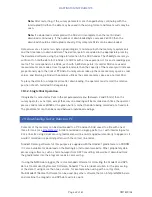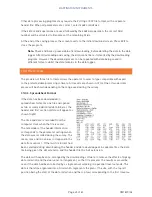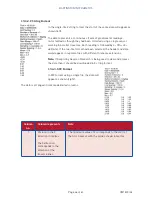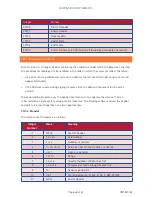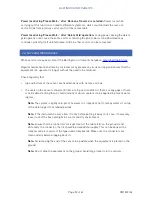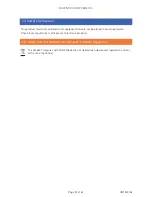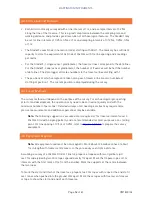
BARTINGTON INSTRUMENTS
Page 55 of 61 OM1800/26
•
It is helpful if the site is divided into rows of regular Grids. Grids of 30x30m are normal, but
difficult areas may be surveyed using 10x10m or 20x20m Grids, and 40x40m Grids can be
used where larger areas are involved.
•
The Grids will be recorded in the order in which they are measured and given numbers
starting at Grid 1. Different Grid sizes may be recorded in any order by changing the Grid size
parameter in the data logger.
•
The starting point for the survey depends on the shape of the area to be covered. If the area
has a major axis in a north/south direction then the first Grid can conveniently be the most
northerly, with the first traverse starting in the north west corner and walking east.
•
Traversing is normally done with a zigzag pattern to minimise the walking distance. The
traverses may be carried out in either parallel or zigzag fashion but it is important to set
the pattern parameter correctly in the data logger. The downloading software provided will
always re-organise any zigzag data to parallel format before saving it to a file.
•
The second traverse is made one interval to the south of the first. Traverses along east/
west lines then continue from the north to the south end of the Grid. The adjacent Grid to the
south of the completed Grid can then be surveyed and the pattern repeated until a complete
column of Grids has been measured. The survey can then move to the next column of Grids.
•
Provided each Grid starts with a clockwise traverse, surveys may be run in any direction
but it will be most convenient and most easily recorded if successive Grids progress in one
direction, i.e. west to east, north to south or vice versa.
•
When surveying sloped ground, parallel survey should be used, allowing to keep walking
pace consistant. Sloping ground should always be surveyed in the direction of the slope.
Surveying across the slope will lead to a piano key effect on the data as one sensor would be
closer to the ground than the other.
A.3. Gridding Data
•
The Grad601 gradiometer provides gridded data by sampling at regular intervals and
emitting an audible bleep corresponding to each metre of traverse.
•
A line with one-metre marks can be laid on the ground along the traverse, enabling the
operator to maintain synchronism with the data sampling by ensuring that the instrument
passes over a mark in time with the bleep.
•
A suitable pace can be set as a survey parameter in the data logger, and modified during
the course of a survey to suit the operator. A pace of about 1.6m/s is suggested as a starting
point.
Содержание Grad601
Страница 1: ...Operation Manual for Grad601 Single Axis Magnetic Field Gradiometer System...
Страница 2: ......
Страница 59: ...BARTINGTON INSTRUMENTS Page 59 of 61 OM1800 26 Notes...
Страница 60: ...BARTINGTON INSTRUMENTS Page 60 of 61 OM1800 26...


